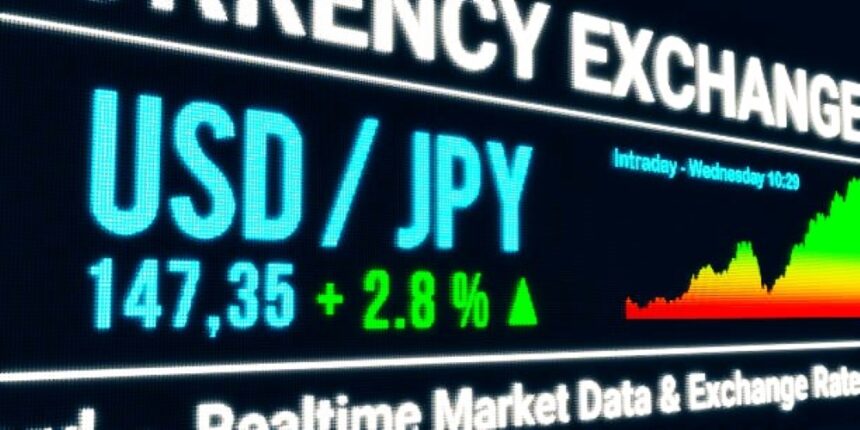Japanese yen widens its range against the US dollar.
The Japanese yen (JPY) extended its sideways consolidative price move on Wednesday. Remaining in a one-week-old range against the US dollar throughout the Asian session.
Intervention fears support the JPY, but BoJ monetary policy uncertainty limits gains.
Geopolitical threats from Middle Eastern crises and the ongoing Russia Ukraine confrontation continue to weigh on investor mood. This, together with the recent verbal intervention by Japanese authorities. Appears to be a crucial reason underpinning the safe haven JPY.
The US Dollar (USD) fell to its lowest level in over three weeks on Tuesday. Fueled by predictions of a shift in the Federal Reserve’s (Fed) policy stance. This further limits the rising potential of the USDJPY pair.
Traders look to the FOMC minutes for clues about the Fed’s rate-cutting strategy and a new impetus.
Traders, on the other hand, appear hesitant to put aggressive directional bets and are now looking to the FOMC meeting minutes. Which will be released later in the US session, for clues regarding the Fed’s rate cutting course.
Meanwhile, a Japanese recession has increased uncertainty over. When the Bank of Japan (BoJ) would shift away from its ultra-easy monetary policy and exit negative interest rates. This may also discourage traders from laying bullish wagers on the JPY and aid Limit losses on the USDJPY pair. As a result, it will be smart to wait for substantial follow through selling before preparing for a continuation of the retreat from a three-month high reached last week.
Daily Market Movers: Japanese Yen fails to attract buyers amid BOJ policy uncertainties.
Fears that Japanese authorities will interfere in the markets to prevent further deterioration in the native currency, along with a milder risk tone, provide some support for the safe-haven Japanese yen.
On Tuesday, Japan’s Finance Minister Shunichi Suzuki emphasized that the government is closely monitoring foreign exchange movements and that the exchange rate is determined by a variety of variables.
In addition, Japan’s Finance Ministry official, Atsushi Mimura, stated that the government can offerWhen it is required to intervene, FX reserves include assets such as savings and foreign bonds.
Mimura went on to say that Japan is constantly contacting and collaborating with foreign nations in the event of an FX intervention, and that it is concerned with ensuring safety and securing liquidity in FX reserve management.
Data released on Wednesday showed that Japanese exports increased more than expected in January, while a larger-than-expected drop in imports indicated slow domestic demand and a weak economy.
In January, exports increased by 11.9% year-on-year, the most since November 2022. Imports decreased by 9.6%, leading to a lower-than-expected deficit of ¥1.758 trillion.
According to the Reuters Tankan poll, Japanese manufacturers’ business confidence declined in February from the previous month’s figure of 6 to -1, the first negative reading since April last year.
This comes on top of a technical recession in Japan, which could jeopardize the Bank of Japan’s aim to leave its ultra-easy policies this year and is preventing JPY bulls from betting aggressively.
US dollar is nearing its lowest level.
The US dollar is nearing its lowest level in over two weeks amid expectations. That the Federal Reserve would begin decreasing interest rates in the coming months. Limiting the upside for the USDJPY pair.
Traders now look forward to the release of the FOMC meeting minutes for clues about the Fed’s rate-cut path. Which will fuel USD demand and provide some major momentum to the currency pair.









